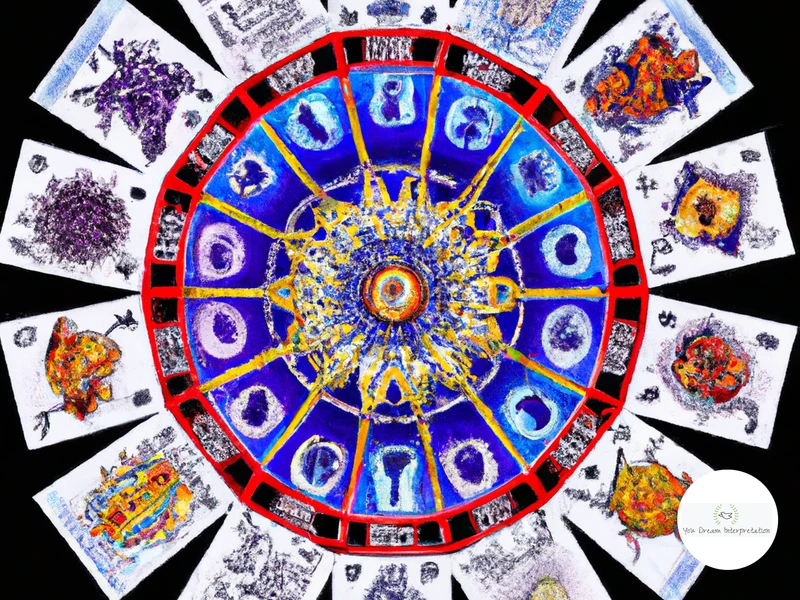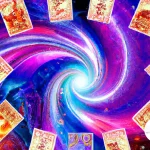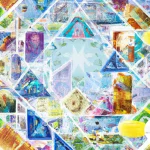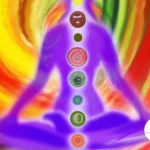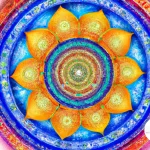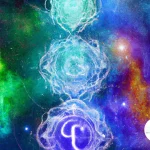Unlocking the Mysteries: The Numerological Significance of Major Arcana Cards in Tarot Readings – Have you ever wondered about the deeper meanings and hidden messages behind the captivating images in a tarot deck? Look no further, for in the realm of tarot, numerology plays a significant role in unraveling the secrets of the Major Arcana cards. In this article, we will delve into the ancient esoteric practice of numerology and how it intertwines with the mystical world of tarot. Prepare to embark on a journey of self-discovery and intuition as we explore the numerological significance of each Major Arcana card and learn how to interpret their hidden messages in tarot readings. Whether you are a tarot enthusiast or simply curious about the mystical arts, this comprehensive guide will deepen your understanding of the intricate symbolism that lies within the cards and enhance your tarot reading skills.
The Basics of Numerology
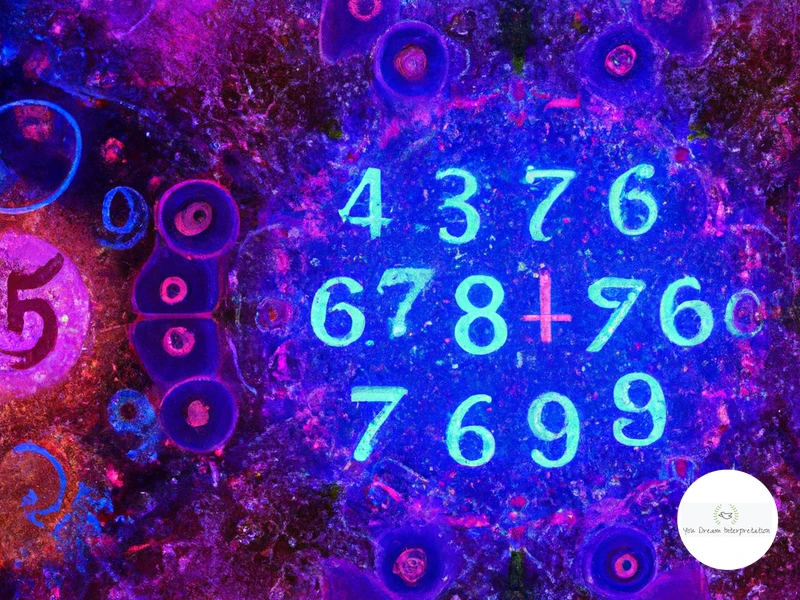
Numerology, with its enigmatic origins and ancient roots, serves as a foundational framework for understanding the intricate tapestry of numbers and their profound influence on our lives. Derived from ancient civilizations, numerology is the belief in the mystical and vibrational significance of numbers, and how they shape our existence. Each number is imbued with its own unique energy and symbolism, acting as a key to unlocking the secrets of our identity and destiny. Through the study of numerology, we gain insights into our personality traits, strengths, weaknesses, and even our life purpose. This esoteric practice has fascinated scholars, spiritualists, and even famous figures throughout history (click here to learn more). Not only does numerology provide psychological benefits by highlighting our inner potential and hidden talents, but it also offers practical insights into our relationships, career paths, and overall life journey (click here for more information). Whether you are mystically inclined or simply curious about the power of numbers, understanding the basics of numerology will open doors to a world of self-discovery and personal growth. Discover how your life path number impacts your career choices (click here to explore).
1. What is Numerology?
Numerology is a complex and fascinating system that assigns unique meanings and energies to numbers. At its core, numerology is the belief that numbers hold significant vibrational qualities and can offer insights into various aspects of our lives. Through the study of numerology, individuals can gain a deeper understanding of their personality traits, strengths, weaknesses, and life purpose. By examining the numerical value and symbolism of names, dates of birth, and other significant numbers, numerology practitioners can uncover hidden patterns and connections. Numerology is not limited to a single culture or time period but has been practiced and studied by civilizations throughout history. From ancient Egypt to ancient Greece, and from the teachings of Pythagoras to modern-day applications, numerology has remained a powerful tool for self-awareness and exploration. Whether used for personal growth, guidance, or as a means of better understanding the world around us, numerology offers a unique perspective that combines mathematical principles with spiritual insight.
2. How Numerology Relates to Tarot
Numerology and tarot have a profound relationship that goes beyond mere coincidence. Each card in a tarot deck holds a numerical value, creating a bridge between the world of numerology and the symbolism of the tarot. The principles of numerology serve as a guiding force in understanding the deeper meanings and messages conveyed through the tarot cards. When interpreting a tarot reading, numerology offers valuable insight into the energetic vibrations represented by the numbers on the cards (click here to learn more about numerology). The numerological significance of the cards adds depth and layers of meaning to the tarot reading, providing a more comprehensive understanding of the situation at hand and the potential outcomes. By combining the interpretations of individual tarot cards with their corresponding numerological values, a tarot reader can delve into the intricacies of a situation and provide a more holistic perspective (click here to learn how to calculate the numerological value of a card). Whether it’s the life path number derived from birthdates or the significance of repetitive numbers appearing in a spread, numerology enhances the accuracy and intricacy of a tarot reading. The interplay between numerology and tarot allows for a deeper exploration of the self, relationships, and spiritual growth, making the tarot reading experience more insightful and transformative.
Understanding Major Arcana Cards
The Major Arcana cards in tarot hold immense significance and serve as the gateway to uncovering profound spiritual insights and universal truths. These 22 cards represent archetypal energies and symbols that embody the various stages and lessons of the human experience. Each card tells a unique story, brimming with symbolism and meaning. From The Fool with its boundless potential and new beginnings to The World representing fulfillment and unity, these cards hold the keys to unlocking our subconscious mind and connecting with a higher power. As we explore each Major Arcana card individually, we will gain a deeper understanding of their numerological associations and the powerful messages they convey in tarot readings. Prepare to embark on a journey of introspection and enlightenment as we delve into the ethereal realm of the Major Arcana cards and uncover the hidden wisdom they hold.
1. The Fool (0)
The Fool card marks the beginning of the Major Arcana journey in tarot readings. Associated with the number 0, it serves as a representation of unlimited potential, new beginnings, and a leap of faith. The Fool is depicted as a carefree individual, standing at the edge of a cliff, oblivious to the potential dangers ahead. This card encourages us to embark on new adventures, to trust in the process of life, and to embrace spontaneity. The number 0 in numerology is often referred to as the Alpha and the Omega, symbolizing the cyclical nature of existence and the interconnectedness of all things. When the Fool appears in a tarot reading, it signifies a time of taking risks, exploring uncharted territories, and letting go of fear and preconceived notions. This card reminds us to embrace the unknown with a sense of curiosity and childlike wonder, allowing ourselves to be guided by intuition rather than solely relying on logic or experience. The Fool card teaches us to approach life with an open mind, to embrace the unexpected, and to trust in the journey ahead.
2. The Magician (I)
The Magician (I) tarot card is a symbol of immense power and potential. As the first card in the Major Arcana, it represents the beginning stages of a journey and the mastery of manipulating the elements to manifest one’s desires. The number 1 signifies individuality, leadership, and self-confidence, making The Magician a potent force in the tarot deck. This card depicts a figure standing at a table adorned with various tools and symbols representing the four elements: earth, air, fire, and water. The Magician holds a wand, representing action and creativity, while pointing towards the sky with the other hand, channeling the energy of the universe. This gesture emphasizes the Magician’s ability to bridge the gap between the spiritual realm and the physical world, signifying a connection to higher consciousness. The Magician encourages individuals to tap into their inner power and use their skills, knowledge, and resources to bring about positive change in their lives. In tarot readings, the appearance of The Magician suggests that the time is ripe for action, manifestation, and utilizing one’s full potential. It serves as a reminder to harness one’s personal power and take decisive steps towards achieving goals. By aligning one’s thoughts, intentions, and actions, The Magician guides individuals towards the mastery of their own destiny and the realization of their dreams.
3. The High Priestess (II)
When delving into the numerological significance of the High Priestess card in tarot readings, we uncover a wealth of mystical symbolism and hidden meanings. The High Priestess is represented by the number II, which holds its own significant vibrations and energies. In numerology, the number II is associated with balance, intuition, and harmony. It reflects the duality and polarity that resides within us and in the world around us. The High Priestess herself is a symbol of wisdom, intuition, and esoteric knowledge. She represents the subconscious, the mysterious realms of the mind, and the power of intuition. This card often signifies the need to tap into one’s inner wisdom and listen to the voice of intuition when faced with important decisions or dilemmas. The High Priestess invites us to explore our spiritual side, to dive deep into our subconscious, and to trust our instincts. She resonates with the mystical and sacred feminine energies, reminding us to embrace our intuitive nature and seek answers from within. In tarot readings, the presence of the High Priestess suggests a time of deep introspection, connecting with our higher selves, and accessing hidden knowledge. She encourages us to trust our inner guidance and pursue a path of spiritual growth and self-discovery. The II card, embodied by the High Priestess, offers a glimpse into the profound connection between numerology and tarot, showcasing how the divine language of numbers enriches our understanding of the tarot’s archetypal meanings.
4. The Empress (III)
The Empress (III), a card of abundance, fertility, and nurturing energy, holds a significant place in the Major Arcana of the tarot deck. Representing the archetype of the divine feminine and motherhood, this card embodies the power of creation and growth. In numerology, the number III is associated with creativity, self-expression, and communication, amplifying the Empress’s ability to manifest and bring life into the world.
In the imagery of the card, the Empress is often depicted as a regal figure seated on a throne surrounded by lush vegetation and blooming flowers, symbolizing her connection to nature and the earth. Her presence exudes a sense of beauty, grace, and sensuality. She is a symbol of unconditional love and nurturing, bringing comfort and support to those around her.
When the Empress appears in a tarot reading, it signifies a period of abundance, creativity, and fertility. It is a card that encourages us to tap into our own inner creativity and explore our passions. It can indicate the birth of new ideas or projects that have the potential to blossom and flourish. The Empress reminds us to trust in our intuition and embrace our nurturing instincts, whether it be in our personal relationships, our creative pursuits, or our connection to the natural world.
In relationships, the Empress represents a harmonious and nurturing partnership, emphasizing the importance of love, compassion, and emotional connection. It encourages us to cultivate and nurture our relationships, allowing them to grow and thrive. If you are seeking guidance in matters of love or family, the Empress serves as a reminder to embrace your feminine energy and connect with your intuition.
Career-wise, the Empress represents a time of abundance and success, particularly in creative or nurturing fields such as art, design, teaching, or healthcare. This card reminds us to embrace our unique talents and explore opportunities that allow us to express our creativity and make a positive impact on the world.
The Empress (III) invites us to embrace the power of creation, nurture our ideas and relationships, and trust in the abundance of the universe. It is a card that celebrates femininity, creativity, and growth, reminding us to tap into our own inner strength and beauty.
5. The Emperor (IV)
The Emperor (IV) – In the realm of tarot, The Emperor is a powerful and authoritative figure who represents structure, stability, and leadership. Being the fourth card in the Major Arcana, The Emperor’s numerological significance lies in the number IV, which symbolizes foundation and practicality. In numerology, the number four is associated with stability, discipline, and the material world. The Emperor embodies these qualities, signifying a strong sense of order and control.
When The Emperor appears in a tarot reading, it suggests a need for structure and organization in one’s life. It represents the establishment of boundaries, setting goals, and taking a disciplined approach to achieve success. The Emperor encourages the seeker to take charge and assert their authority, whether it be in a professional or personal context. This card signifies the importance of harnessing one’s power and using it responsibly, drawing upon inner strength, and embracing leadership qualities.
The Emperor’s association with the astrological sign of Aries further emphasizes its assertive and courageous nature. Aries is a sign that exudes confidence, ambition, and the drive to conquer challenges. The Emperor embodies these qualities, urging the seeker to rise above obstacles and manifest their desires with unwavering determination.
In a tarot spread, The Emperor often appears as a guiding force, reminding the seeker to utilize their analytical abilities, establish a solid foundation, and take calculated risks. It advises against impulsive decisions and instead encourages careful planning and thoughtful action. The Emperor also conveys a message of authority and mentorship, reminding the seeker to step into their own power and offer guidance to others.
The Emperor is a symbol of structure, authority, and leadership. Its numerological significance as the number IV adds depth and meaning to its interpretation, highlighting the importance of stability and practicality. When this card appears in a tarot reading, it serves as a reminder to embrace discipline, assertiveness, and the ability to create a strong foundation for success.
6. The Hierophant (V)
The Hierophant, represented by the numeral V in the Major Arcana, is a card of tradition, spirituality, and wisdom. This card speaks to the power of tradition and the established institutions that guide our lives. The Hierophant is often depicted as a religious figure, such as a pope or priest, symbolizing the importance of organized religion and spiritual teachings. Drawing upon the energy of the number five, this card embodies the balance between the material world and the spiritual realm.
In tarot readings, the Hierophant encourages us to seek guidance from traditional sources and to honor the wisdom passed down through generations. This card signifies the need to adhere to certain rules, values, and belief systems. It represents the influence of structured institutions like education, philosophy, and religion in our lives. The Hierophant reminds us to follow the established protocols and seek counsel from trusted mentors or authority figures.
Additionally, the Hierophant card encourages us to explore our own spiritual path and personal beliefs. It urges us to connect with our higher selves and align our actions with our spiritual values. This card invites us to reflect on our relationship with spirituality and find comfort and guidance within established religious or spiritual practices.
In love and relationships, the Hierophant signifies the need for commitment and loyalty. It emphasizes the importance of shared values, traditions, and beliefs within a partnership. This card may indicate the influence of religious or cultural backgrounds in a relationship, and the need to find balance and harmony within these differences.
Ultimately, the Hierophant urges us to find wisdom through tradition and spirituality. It invites us to explore our beliefs, seek timeless knowledge, and embrace the guidance that established institutions can offer. Through the Hierophant, we can find strength, clarity, and a deeper connection to our own spirituality.
7. The Lovers (VI)
The Lovers card holds immense significance within the Major Arcana of the tarot deck. Represented by the number VI in numerology, this card embodies the themes of love, relationships, and choices. It serves as a symbol of duality and the union of opposites, reflecting the inherent human desire for connection and harmony. The Lovers card often depicts a couple standing beneath a celestial figure, with an angel watching over them. This imagery represents the divine guidance and spiritual influence that can guide our choices when it comes to matters of the heart. The card represents not only romantic love but also the importance of making choices based on values and personal integrity. It urges us to consider the implications of our decisions and to choose wisely in matters of love and partnerships. The Lovers card also signifies the need for balance and integration within ourselves. It reminds us to cultivate self-love and acceptance before seeking and engaging in relationships. When this card appears in a tarot reading, it may indicate a significant choice related to love, partnerships, or values. It prompts us to delve deep within ourselves, listen to our intuition, and align our actions with our true desires and values. Ultimately, the Lovers card encourages us to embrace the power of love and connection in all aspects of our lives.
8. The Chariot (VII)
The Chariot is the seventh card in the Major Arcana of the tarot deck, represented by the Roman numeral VII. This powerful card exudes strength, willpower, and determination. In numerology, the number 7 holds great significance as a spiritual number associated with introspection, intuition, and inner wisdom. The Chariot is a symbol of forward movement and control, urging us to harness our inner strength to overcome obstacles and achieve victory.
When interpreting The Chariot in tarot readings, its numerological value enhances the card’s meaning. The number 7 signifies a period of self-reflection, where introspection and self-discovery become essential. It urges us to tap into our intuition and trust our inner guidance. The Chariot, with its association with the number 7, encourages us to stay focused on our goals and take control of our destiny. It reminds us that success is within reach if we use our willpower and determination to drive ourselves forward.
In a tarot spread, The Chariot may indicate a time of significant progress and breakthroughs. It signifies that balance and control are crucial in achieving success. This card reminds us to find harmony between our conscious and subconscious minds, blending them to guide our actions. The Chariot urges us to have a clear vision of our intended path and use our determination and inner strength to navigate any challenges that arise.
When The Chariot appears in a tarot reading, it often symbolizes a journey or a transition. It represents the need for self-discipline and finding the inner resolve to face any obstacles that may come our way. With the energy of the number 7, The Chariot reminds us to trust our intuition and follow our instincts as we embark on this transformative journey.
The Chariot (VII) in tarot readings represents a period of self-reflection, inner strength, and forward movement. Its numerological significance enhances these qualities, emphasizing the importance of intuition, introspection, and willpower. By embracing our inner power and finding balance, we can navigate through challenges and achieve success on our life’s journey.
9. Strength (VIII)
The card Strength, also known as card VIII in the Major Arcana of the tarot deck, holds deep symbolic meaning in both numerology and tarot readings. Represented by a figure taming a lion, this card embodies courage, inner strength, and the power of overcoming obstacles. In numerology, the number eight signifies balance, harmony, and resilience. It represents a strong, stable foundation on which one can build a life of strength and determination. When Strength appears in a tarot reading, it urges the seeker to tap into their inner reservoir of strength and embrace their personal power. It encourages them to trust in their abilities and confront challenges with bravery and confidence. This card reminds us of the importance of facing adversity head-on, knowing that we possess the strength to overcome any obstacles that come our way. In essence, Strength (VIII) serves as a reminder that true strength comes from within, enabling us to harness our inner courage and navigate the trials of life with grace and resilience.
10. The Hermit (IX)
The Hermit, represented by the number IX in the Major Arcana, emanates wisdom, introspection, and solitude. This card depicts an elderly figure holding a lantern, symbolizing the deep inner knowledge and enlightenment that comes from seeking answers within. The number IX in numerology is associated with spiritual growth, self-reflection, and the quest for deeper understanding. The Hermit encourages us to withdraw from the noise and distractions of the external world and embark on a journey of self-discovery and introspection. It is a card that urges us to take a step back and evaluate our lives, seeking solitude and inner guidance in order to find our own truth. The Hermit indicates a period of introspection and introspection. It is a time to explore our innermost thoughts, emotions, and desires. Through solitude and self-reflection, we can gain a deeper understanding of ourselves and the world around us. The Hermit invites us to embrace the wisdom that can only come from within and to trust our own intuition. This card serves as a reminder that sometimes the answers we seek lie not in the external world, but within ourselves. It encourages us to take time to disconnect from the chaos of daily life and reconnect with our own inner light. The Hermit teaches us to be comfortable with solitude, as it is through solitude that we can truly find ourselves and discover our own unique path in life. By shining the light of awareness on our inner landscape, we can navigate through the darkness and emerge with newfound wisdom and clarity. The Hermit, with its profound symbolism and numerological significance, reminds us of the power of solitude, introspection, and the journey of self-discovery.
11. Wheel of Fortune (X)
The Wheel of Fortune (X) is a captivating and enigmatic card within the Major Arcana deck. Represented by the number 11 in numerology, this card holds immense significance in tarot readings. The Wheel of Fortune serves as a reminder of the ever-changing cycles of life and the constant ebb and flow of destiny. It symbolizes both the ups and downs, the highs and lows that we experience as we journey through life. This card is often depicted as a large wheel or a spinning disc, with various mystical symbols surrounding it. It signifies the cyclical nature of existence and the principle of cause and effect. When the Wheel of Fortune appears in a reading, it indicates that we are at a crucial turning point in our lives where opportunities and challenges await us. It is a testament to the fact that life is not stagnant, and everything is in a state of constant motion. This card encourages us to embrace change, take risks, and trust in the natural order of the universe. It reminds us that our actions play a significant role in shaping our destiny and that when we align ourselves with the rhythms of the Wheel of Fortune, we can manifest a more fulfilling and prosperous reality. The Wheel of Fortune urges us to release resistance and surrender to the ever-changing tides of life, for it is through adaptation and acceptance that we can find true harmony and balance.
12. Justice (XI)
When the Justice card appears in a tarot reading, it symbolizes fairness, balance, and the universal laws of cause and effect. Represented by the number 11 in the Major Arcana, Justice is a powerful card that brings attention to the importance of truth and integrity in all aspects of life. The number 11 is considered a master number in numerology, emphasizing spiritual enlightenment and higher consciousness. This card speaks to the principles of karmic justice and the idea that our actions have consequences. It serves as a reminder that honesty and moral ethics are crucial in decision-making processes and interactions with others.
In tarot readings, the Justice card often signifies legal matters, contracts, and agreements. It suggests that a fair resolution will be reached, and justice will prevail. This card encourages individuals to examine their own actions and take responsibility for the outcomes they create. It also reminds us that our choices should be based on equitable and unbiased judgment. The Justice card calls for a harmonious integration of the mind and heart, advocating for making decisions that are not only logical but also compassionate.
When this card appears in a spread, it may indicate the need to weigh different perspectives, seek the truth, and find balance in conflicting situations. It prompts individuals to consider the consequences of their actions before making any major decisions. By incorporating the numerological significance of the number 11 into the interpretation, it enhances the understanding of the Justice card’s profound symbolism.
Justice (XI) represents the importance of fairness, truth, and integrity in our actions and decisions. It calls for a balance between logic and compassion, reminding us to seek equitable outcomes and take responsibility for the consequences of our choices. This card, with its powerful numerological significance, serves as a guide to navigating the complexities of life with moral righteousness and karmic awareness.
13. The Hanged Man (XII)
The Hanged Man (XII) card in the Major Arcana of the tarot deck carries profound numerological significance. Represented by the number XII, which reduces to 3 (1+2), the Hanged Man embodies the energy of sacrifice, surrender, and suspension. This card challenges traditional viewpoints and encourages a shift in perspective. The number 3 symbolizes creativity, expression, and growth. When combined with the Hanged Man’s imagery, it suggests that embracing a different outlook or sacrificing old patterns and beliefs can lead to newfound enlightenment and personal transformation. The Hanged Man is often depicted hanging upside down from a tree, symbolizing a reversal in the conventional way of seeing things. This card urges individuals to pause, reflect, and surrender control, for it is in this state of surrender that true wisdom and insight can be attained. The Hanged Man invites individuals to release attachments, let go of resistance, and trust in the process of life. It is a card that teaches the value of patience, acceptance, and self-discovery. In a tarot reading, the presence of the Hanged Man may suggest a need for embracing unconventional solutions, surrendering to circumstances beyond one’s control, and finding a new perspective to navigate through challenging situations.
14. Death (XIII)
The 14th card of the Major Arcana in tarot is none other than the enigmatic Death card, represented by the Roman numeral XIII. While its name may strike fear in the hearts of many, the Death card holds a much deeper meaning than its literal interpretation suggests. In tarot, Death signifies transformation, rebirth, and the end of one chapter leading to the beginning of another. This card is associated with the zodiac sign Scorpio, symbolizing the profound changes that lie ahead. It invites us to embrace the concept of impermanence and to release what no longer serves us. Death marks a period of profound personal growth and evolution, urging us to let go of old patterns, beliefs, and attachments that hinder our progress. It is a powerful reminder that in order to experience new beginnings and growth, we must be willing to shed the aspects of ourselves that no longer resonate with our higher selves. When the Death card appears in a tarot reading, it is not necessarily a harbinger of physical death, but rather a call to embrace transformation and embrace the unknown. It challenges us to face our fears and surrender to the natural cycles of life and death. The Death card is a reminder that from the ashes of what was, new opportunities and possibilities are born. It encourages us to relinquish control and trust the process of life (insert internal link to relevant material here). Embracing the energy of the Death card can ultimately lead to profound personal growth and spiritual enlightenment.
15. Temperance (XIV)
The Temperance card in the Major Arcana, represented by the number XIV, exudes a sense of balance, harmony, and moderation. In tarot readings, this card serves as a gentle reminder to find equilibrium and embrace the art of blending opposing forces. With its symbolic imagery of an angel delicately pouring water between two cups, Temperance signifies the need to find harmony within oneself and in relationships with others.
Key Meanings:
– Balance and harmony: Temperance urges individuals to find a middle ground, avoiding extremes and embracing a more balanced approach to life.
– Patience and moderation: This card advises practicing moderation, avoiding impulsive actions, and exercising patience in all aspects of life.
– Integration and adaptation: Temperance encourages the blending of different aspects of oneself, integrating conflicting energies to achieve wholeness and personal growth.
– Healing and transformation: The Temperance card represents the healing power of time and patience, reminding individuals to allow transformation and growth to occur naturally.
Interpretation:
When the Temperance card appears in a tarot reading, it suggests that the seeker needs to find harmony between opposing forces in their life. This could manifest as striking a balance between work and personal life, reconciling differences in relationships, or finding moderation in one’s thoughts and actions. It serves as a gentle reminder to approach challenges with patience and a calm demeanor, trusting that balance and resolution will be achieved in due time.
In love and relationships, Temperance encourages open communication, compromise, and finding common ground. It signifies the importance of embracing the differences, strengths, and weaknesses of each person to create a harmonious and fulfilling partnership.
In terms of career and finance, Temperance advises against impulsive decisions and encourages the seeker to find a harmonious balance between ambition and work-life balance. It may also highlight the need for adapting to changing circumstances and finding creative solutions that integrate different skills and perspectives.
Temperance represents a spiritual journey towards self-discovery, personal growth, and finding balance in all aspects of life. It serves as a gentle reminder to approach challenges with patience, moderation, and the willingness to adapt, ultimately leading to a more harmonious and fulfilled existence.
16. The Devil (XV)
The Devil (XV), a card shrouded in mystery and intrigue, holds immense numerological significance within the realm of tarot. Represented by the number fifteen (XV), this card embodies the powerful energy of temptation, bondage, and materialism. The number fifteen is a combination of the numbers one and five, each carrying its own symbolic weight. In numerology, the number one signifies individuality, leadership, and assertiveness, while five symbolizes change, freedom, and adaptability. The fusion of these influences in The Devil card creates a potent blend of personal power entangled with the lure of earthly desires.
In tarot readings, The Devil often serves as a wake-up call, urging individuals to examine their attachments and addictive behaviors. It reminds us to be mindful of our materialistic tendencies and the negative influences that may hold us captive. The card’s numerological value of fifteen highlights the need for balance and moderation in our lives, as excess can lead to self-destructive patterns and a loss of personal freedom.
When The Devil appears in a reading, it invites us to explore our inner shadows and confront the aspects of ourselves that we may be suppressing or denying. It warns against succumbing to the temptations of instant gratification and urges us to break free from the chains that bind us. The numerological association with the number fifteen serves as a reminder that true liberation lies in embracing personal responsibility and releasing ourselves from the grip of external influences.
The Devil (XV) card in tarot readings holds immense significance both symbolically and numerologically. Its connection to the number fifteen underscores the themes of temptation, bondage, and materialism, while also emphasizing the need for balance and self-reflection. By understanding the numerological implications of The Devil card, we gain a deeper appreciation for its transformative messages and the opportunity for spiritual growth it offers.
17. The Tower (XVI)
The Tower, represented by the number XVI, is a card that can send shivers down the spine of even the most seasoned tarot reader. This card portrays a tall tower being struck by lightning, engulfed in flames, and crumbling into ruins. Its symbolism is profound and offers a powerful message of sudden, unforeseen change and disruption. The Tower signifies moments of crisis, upheaval, and the breaking down of outdated structures in our lives. It serves as a wake-up call, urging us to examine our foundations and belief systems that no longer serve our highest good. While the imagery may be unsettling, the Tower’s message is not one of doom and destruction, but rather one of breakthrough and liberation. It is through the destruction of the old that space is created for the new to emerge. The Tower reminds us that sometimes, the only way to grow and evolve is to release what no longer aligns with our authentic selves. In a tarot reading, the Tower indicates a significant shake-up or revelation on the horizon, urging us to embrace the transformational energy and trust the process of rebuilding our lives on a firmer, more authentic foundation.
18. The Star (XVII)
The Star, represented by the number XVII, is one of the most radiant and hopeful cards in the Major Arcana. In numerology, the number 17 is reduced to 8 (1 + 7 = 8), symbolizing strength, success, and abundance. This card depicts a tranquil night sky with a shining star guiding the way amidst darkness, signifying renewed hope, inspiration, and spiritual guidance.
The Star card encourages us to have faith in ourselves and the universe, reminding us that even during challenging times, there is always light and guidance available. It serves as a beacon of optimism, urging us to trust our intuition and follow our dreams. The number 17 in numerology is also associated with spiritual awakening and a deeper connection to the divine (insert internal link to relevant anchor).
When the Star appears in a tarot reading, it indicates that brighter times are ahead. It offers a sense of healing, renewal, and the opportunity for personal growth. This card reminds us to focus on self-care, maintain a positive mindset, and embrace our own unique path. The Star is a symbol of hope, reminding us that even amidst challenges, we have the inner strength and guidance to navigate through them.
The numerological significance of the Star carries messages of balance and harmony. The number 8 embodies a sense of stability, achievement, and material abundance, aligning perfectly with the qualities represented by the Star card. It encourages us to find a balance between our earthly desires and our spiritual aspirations, reminding us of the importance of nurturing both aspects of our lives.
The Star card, with its numerological significance of 17/8, illuminates our path with hope, inspiration, and spiritual guidance. It calls upon us to trust in ourselves and the universe, reminding us that we possess the inner strength to overcome challenges and manifest our dreams. This card serves as a reminder of the harmonious balance between the material and spiritual realms, urging us to embrace self-care and cultivate a positive mindset on our journey towards abundance and fulfillment.
Interpreting Numerology in Tarot Readings
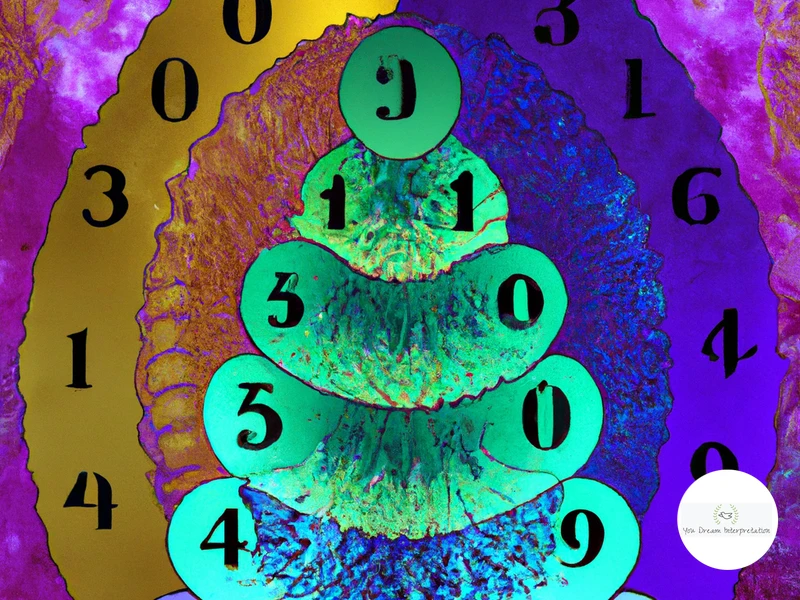
In the realm of tarot readings, numerology serves as a powerful tool for interpreting the hidden meanings and messages within the cards. To fully grasp the interplay between numerology and tarot, it is essential to understand how to calculate the numerological value of a card. Each card is assigned a numerical value based on its position in the Major Arcana, ranging from 0 (The Fool) to 21 (The World). By combining the wisdom inherent in the tarot card meanings with the numerological significance, a deeper layer of insight and understanding emerges. The influence of the card’s numerological meaning can provide additional clarity and guidance in a tarot reading, reinforcing or amplifying the overall message. Exploring numerological patterns and synchronicities within a tarot spread can also unveil hidden connections and themes that might otherwise go unnoticed. Whether you are a seasoned tarot reader seeking to deepen your practice or a curious seeker looking to delve into the mystical world of tarot and numerology, this integration of divinatory arts will open a gateway to profound revelations and transformative experiences.
1. How to Calculate the Numerological Value of a Card
To calculate the numerological value of a tarot card, we need to understand the underlying principles of assigning numbers to the cards. Each card in the Major Arcana is associated with a specific number, ranging from 0 to 21. These numbers hold immense symbolic significance and can offer profound insights into the card’s meaning.
The calculation itself is relatively straightforward. For cards numbered from 1 to 21, we simply add up the digits until we obtain a single-digit number or a master number (11, 22, or 33). However, when it comes to the Fool card (0), it holds a unique position as it represents both the beginning and the end of the journey. The Fool is considered a card of infinite potential and possibility.
For example, let’s take the Magician card (I) as an illustration. The number associated with the Magician is 1. By reducing 1 (1 + 0) to a single-digit number, we find that the numerological value of the Magician card is 1. This number represents new beginnings, individuality, and the power of manifestation. Keep in mind that numerology is an essential tool for understanding the energy and essence of each card, allowing tarot readers to gain deeper insights in their interpretations.
Analyzing the numerological value of a card in tarot readings provides a valuable layer of meaning that complements the visual symbolism and traditional interpretations. The numerological value adds depth and richness to the reading, allowing the reader to tap into the intricate connections between numbers and archetypal forces at play.
Remember, when calculating the numerological value of a card, assign numbers to their respective cards and reduce them to a single digit or master number (click here for more on numerology in tarot readings). By incorporating numerology into your tarot practice, you can uncover hidden patterns, gain a deeper understanding of the cards, and unlock profound insights during your readings.
2. Combining Numerology with Tarot Card Meanings
When it comes to tarot readings, combining numerology with tarot card meanings can provide a rich and multi-dimensional understanding of the messages within the cards. By integrating the numerological significance of each card, we can unlock a deeper layer of symbolism and interpretation.
To begin, let’s explore a practical method for combining numerology with tarot. Each card in the Major Arcana has both a traditional tarot interpretation and a numerological value. For example, The Magician (I) is associated with the number 1, representing new beginnings, creativity, and individuality. By considering both the tarot interpretation and the numerological value of a card, we can gain a more comprehensive understanding of its meaning in a reading.
One approach is to use the numerological value of a card to enhance or confirm the traditional tarot interpretation. For instance, if The Magician (I) appears in a tarot spread, its association with the number 1 may indicate that the querent is at the beginning of a new venture or creative endeavor. This numerical aspect adds another layer of insight to the interpretation, reinforcing the sense of fresh energy and personal power that The Magician embodies.
Another way to combine numerology with tarot card meanings is to look for patterns or connections within a reading. By adding up the numerological values of multiple cards in a spread, we can uncover a broader theme or message. For instance, if a reading consists of several cards associated with the number 3, such as The Empress (III) and The Chariot (VII), it may suggest a period of growth, abundance, and forward momentum. This numerical pattern reinforces the tarot interpretations and provides a more cohesive and holistic reading experience.
Combining numerology with tarot card meanings allows us to dive deeper into the symbolism and messages within a tarot reading. By incorporating the numerological significance of each card and looking for patterns or connections, we can enhance our interpretation and gain a more profound understanding of the querent’s situation. Whether you are a seasoned tarot reader or just beginning your journey, integrating numerology into your tarot practice can deepen your connection to the cards and unlock new insights for both yourself and those you read for.
3. The Influence of the Card’s Numerological Meaning
The numerological meaning of a tarot card holds significant influence and adds depth to its interpretation within a reading. Each number carries its own energetic vibration and symbolism, which can enhance or alter the overall message of the card. When we analyze the numerological value of a card, we gain insight into its inherent qualities and the underlying forces at play. For example, if we consider the card “The Emperor” with its numerological value of IV, we can discern its influence in terms of stability, structure, and authority. The number four represents a strong foundation, order, and practicality, aligning perfectly with the Emperor’s qualities as a ruler and decision-maker in tarot. Similarly, the numerological value of a card can highlight potential challenges or lessons associated with the card’s meaning. For instance, the card “The Tower” has a numerological value of XVI, which can signify sudden upheaval, disruption, and breakthroughs. This reinforces the concept of dramatic transformations and the destruction of old structures and beliefs that the Tower represents. By understanding the numerological significance of each card, tarot readers can delve deeper into the layers of meaning and provide more accurate and nuanced interpretations for their clients. So, the next time you encounter a tarot card in a reading, pay attention to its numerological value and unlock the hidden insights it has to offer.
4. Numerological Patterns and Synchronicities
Numerology is not only about individual numbers and their meanings but also the patterns and synchronicities that emerge when multiple numbers are combined. When studying tarot readings, it is important to pay attention to these numerological patterns and synchronicities, as they offer valuable insights into the messages being conveyed. These patterns can manifest in various ways, such as repeated numbers or specific sequences appearing in a reading. For example, if the cards drawn include multiple instances of the number 3, it suggests a strong emphasis on creativity, growth, and manifestation. Likewise, if a reading contains a sequence of ascending or descending numbers (e.g., 1, 2, 3 or 10, 9, 8), it signifies a progression or transition in the querent’s life journey. These synchronicities serve as subtle yet powerful indicators of the Universe’s guidance and alignment. Paying attention to these patterns helps us grasp the underlying themes and energies that are at play in a tarot reading (Learn more about interpreting numerological patterns and synchronicities in tarot readings). The presence of these patterns and synchronicities adds depth and accuracy to the interpretation, offering a clearer understanding of the messages being conveyed and aiding in decision-making processes. By attuning ourselves to these numerological cues, we can tap into a deeper level of intuition and comprehension during tarot readings.
Conclusion
In conclusion, the study of numerology and its application within tarot readings enhances our understanding of the hidden messages and deeper meanings behind the Major Arcana cards. By harnessing the power of numbers, we gain a profound insight into our personal journey, allowing us to navigate through life’s challenges and seize opportunities with clarity and purpose. Numerology helps us uncover the intricate connections between the numerical values assigned to the Major Arcana cards and their symbolic interpretations. The numerological significance of each card adds an extra layer of depth to tarot readings, allowing us to tap into the universal energies and archetypal patterns that shape our lives. Furthermore, combining numerology with the traditional meanings of the cards enables us to interpret the cards in a more holistic and nuanced way, offering deeper insights and guidance. The patterns and synchronicities that arise through numerology in tarot readings provide a sense of interconnectedness between seemingly unrelated events, reinforcing the notion that everything is part of a greater cosmic design. Whether you are a seasoned tarot reader or a beginner on this mystical journey, embracing numerology in your practice will elevate your intuitive abilities and give you a more profound understanding of the messages within the cards. It is a powerful tool for self-reflection, personal growth, and spiritual exploration. So, dive into the world of numerological significance in the Major Arcana cards and unlock the mystical wisdom that awaits.
Frequently Asked Questions
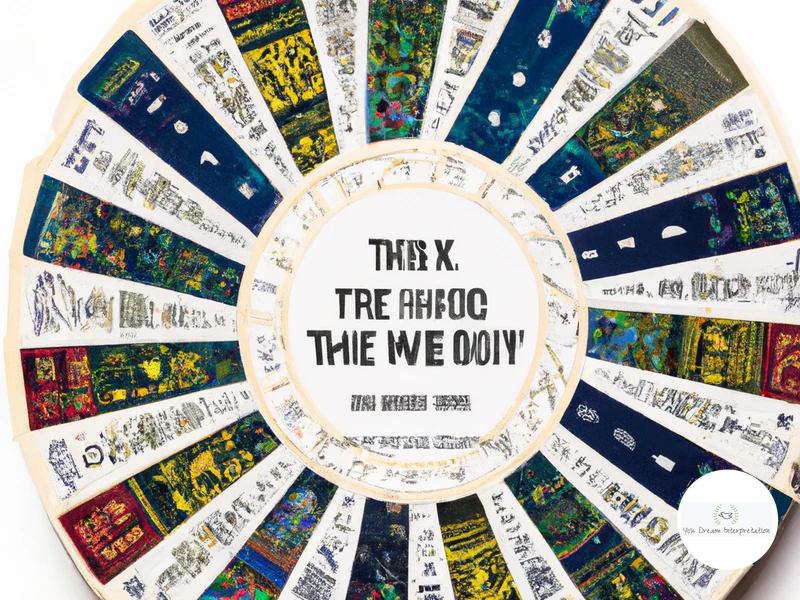
2. How does Numerology relate to Tarot?
Numerology and tarot are interconnected through the Major Arcana cards. Each card in the tarot deck is assigned a numerological value, which adds depth and symbolism to its interpretation in a reading.
3. What is the significance of the Major Arcana cards in Tarot?
The Major Arcana cards represent pivotal life events, archetypal energies, and spiritual lessons. They offer profound insights into the deeper aspects of our lives and can provide guidance for self-discovery and personal growth.
4. How do I calculate the numerological value of a Tarot card?
To calculate the numerological value of a Tarot card, add the digits of its assigned number until you have a single-digit number or a number in the range of 1-22, which corresponds to the Major Arcana cards.
5. Can I combine Numerology with Tarot card meanings?
Absolutely! Combining numerology with tarot card meanings can enhance your understanding of a card’s message. By incorporating numerological insights, you can gain deeper insights into the hidden symbolism and associations of each card.
6. Does the numerological meaning of a card influence its interpretation?
Yes, the numerological meaning of a card adds an extra layer of significance to its interpretation. It provides additional insights and context that can enrich the overall reading and deepen your understanding of the card’s message.
7. Are there any numerological patterns or synchronicities in Tarot readings?
Absolutely! Numerological patterns and synchronicities often appear in tarot readings. Paying attention to these patterns can provide valuable guidance and highlight the interconnectedness of the cards and their messages.
8. How can I interpret numerological patterns in a Tarot spread?
Interpreting numerological patterns in a Tarot spread involves looking for recurring numbers or specific sequences that align with the cards drawn. These patterns can unveil deeper meanings and themes that tie the reading together.
9. Can numerology help in understanding relationship dynamics in Tarot readings?
Yes, numerology can offer insights into relationship dynamics in Tarot readings. By examining the numerological values of cards representing individuals, you can gain a better understanding of compatibility, challenges, and growth potential within a relationship.
10. How can I use numerology and Tarot together for personal growth?
Using numerology and Tarot together can facilitate personal growth by providing a deeper understanding of oneself and life events. It can help you uncover hidden patterns, transform limiting beliefs, and make more empowered choices on your journey of self-discovery.
References
Frequently Asked Questions

1. How can numerology enhance tarot readings?
Numerology adds an additional layer of depth and meaning to tarot readings by providing insight into the energetic vibrations associated with each card. It offers a numerical perspective that can enhance the interpretation and understanding of the cards.
2. What is the significance of the number 0 in tarot readings?
The number 0 represents infinite potential and starting a new cycle. In tarot readings, the Fool card, associated with the number 0, symbolizes new beginnings, spontaneity, and stepping into the unknown.
3. How do you calculate the numerological value of a tarot card?
To calculate the numerological value of a tarot card, you add up the digits of the number on the card until you have a single-digit number. For example, if the card is VIII (8), you add 8+8=16, then 1+6=7. So, the numerological value of the card is 7.
4. Can numerology be applied to all tarot cards?
Numerology can be applied to all tarot cards, particularly the Major Arcana cards. Each card has a unique numerical value, which can provide additional insights and meaning during a tarot reading.
5. How does numerology relate to the meaning of tarot cards?
Numerology relates to the meaning of tarot cards by offering a deeper understanding of the energetic vibrations and symbolism associated with each number. It helps uncover hidden meanings and insights that can enhance the interpretation of the cards.
6. Are there any specific numerological patterns in tarot readings?
Yes, there can be specific numerological patterns that emerge in tarot readings. These patterns may indicate synchronicities or recurring themes in the querent’s life. Paying attention to such patterns can provide valuable guidance and insight.
7. How can numerology and tarot work together to provide accurate readings?
Numerology and tarot work together by offering complementary perspectives. Tarot provides visual symbolism and intuitive insights, while numerology adds a numerical framework that can enhance the interpretation and accuracy of the readings.
8. Can numerology help predict future events in tarot readings?
Numerology in tarot readings is not primarily about predicting specific future events. Instead, it offers a deeper understanding of the energetic influences and potential outcomes associated with each card. It provides guidance and insight rather than definitive predictions.
9. What is the significance of repeating numbers in tarot readings?
Repeating numbers in tarot readings, such as seeing multiple cards with the same numerological value, can indicate a strong emphasis on the energy and themes represented by that particular number. It suggests a significant message or lesson being conveyed in the reading.
10. Can numerology provide insight into personal growth and spiritual development?
Yes, numerology can provide valuable insight into personal growth and spiritual development. By understanding the numerological significance of tarot cards, individuals can gain deeper self-awareness and align with their life path, enabling personal growth and spiritual transformation.
References
- The key to understanding Tarot – Numerology
- Tarot and Numerology: How to Use Your Life Path Number …
- Numerology and Tarot

